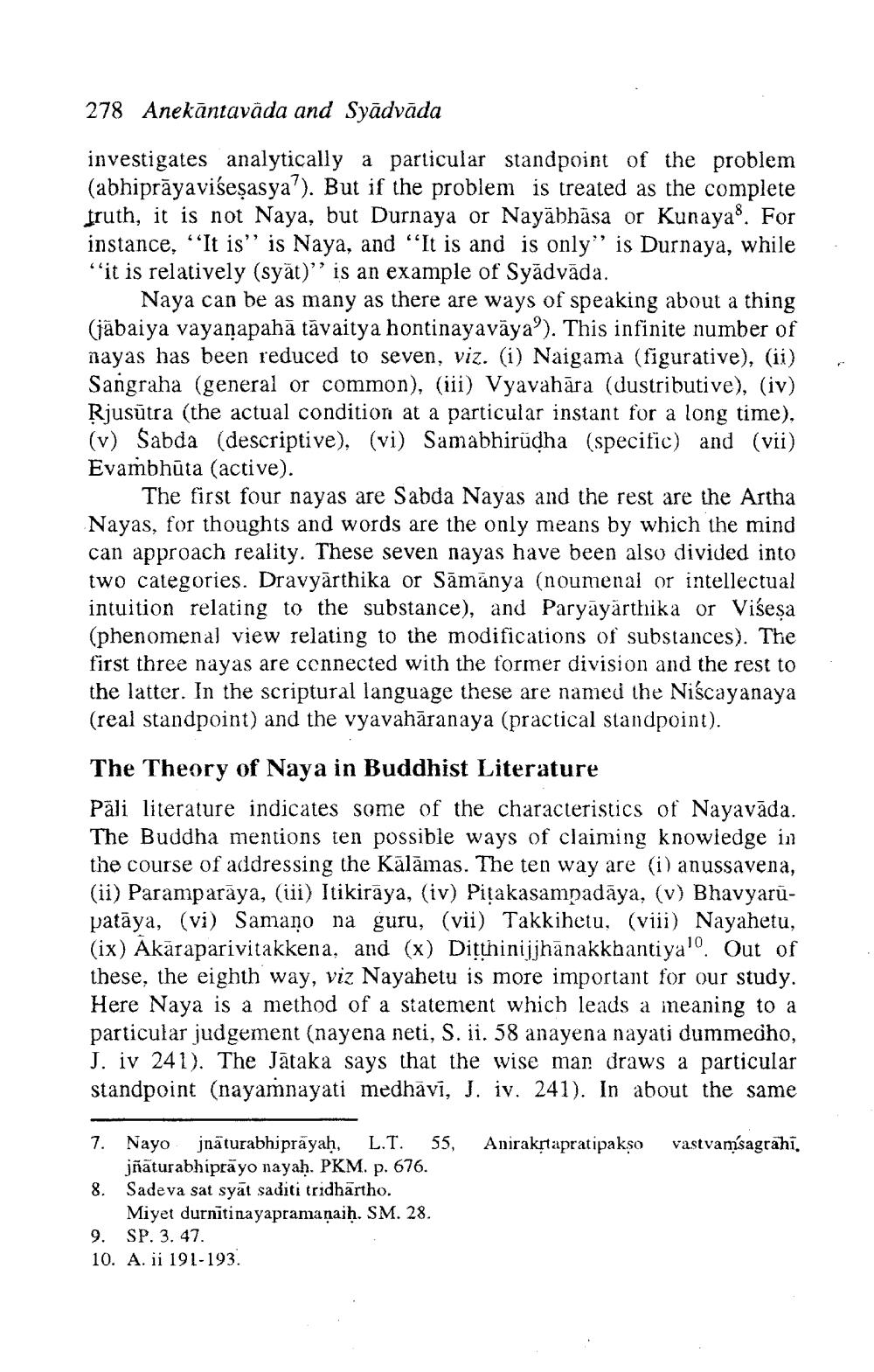________________
278 Anekāntavāda and Syādvāda
investigates analytically a particular standpoint of the problem (abhiprāyaviśeşasya?). But if the problem is treated as the complete
uth, it is not Naya, but Durnaya or Nayābhāsa or Kunaya. For instance. "It is' is Naya, and "It is and is only” is Durnaya, while “it is relatively (syät)' is an example of Syädväda.
Naya can be as many as there are ways of speaking about a thing (jäbaiya vayanapahā tăvaitya hontinayavāya"). This infinite number of mayas has been reduced to seven, viz. (i) Naigama (figurative), (ii) Sangraha (general or common), (iii) Vyavahāra (dustributive), (iv) Rjusūtra (the actual condition at a particular instant for a long time). (v) Sabda (descriptive), (vi) Samabhirudha (specific) and (vii) Evambhūta (active).
The first four nayas are Sabda Nayas and the rest are the Artha Nayas, for thoughts and words are the only means by which the mind can approach reality. These seven nayas have been also divided i two categories. Dravyārthika or Sāmānya (noumenal or intellectual intuition relating to the substance), and Paryāyarthika or Visesa (phenomenal view relating to the modifications of substances). The
ee nayas are connected with the former division and the rest to
ter. In the scriptural language these are named the Niscayanaya (real standpoint) and the vyavahāranaya (practical standpoint).
The Theory of Naya in Buddhist Literature Pāli literature indicates some of the characteristics of Nayavāda. The Buddha mentions ten possible ways of claiming knowledge in the course of addressing the Kālāmas. The ten way are (i) anussavena, (ii) Paramparāya, (ii) Itikirāya, (iv) Pițakasampadāya, (v) Bhavyarūpatāya, (vi) Samano na guru, (vii) Takkihetu, (viii) Nayahetu, (ix) Akāraparivitakkena, and (x) Ditthinijjhānakkhantiya'o. Out of these, the eighth way, viz Nayahetu is more important for our study. Here Naya is a method of a statement which leads a ineaning to a particular judgement (nayena neti, S. ii. 58 anayena nayati dummecho, J. iv 241). The Jātaka says that the wise man draws a particular standpoint (nayamnayati medhāvi, J. iv. 241). In about the same
Anirakrtapratipaksa
vastvamsagrahi.
7. Nayo jnāturabhiprāyaḥ, L.T. 55,
jñaturabhiprāyo nayah. PKM. p. 676. 8. Sadeva sat syāt saditi tridhartho.
Miyet durnitinayapramanaiḥ. SM. 28. 9. SP. 3. 47. 10. A. ii 191-193.




